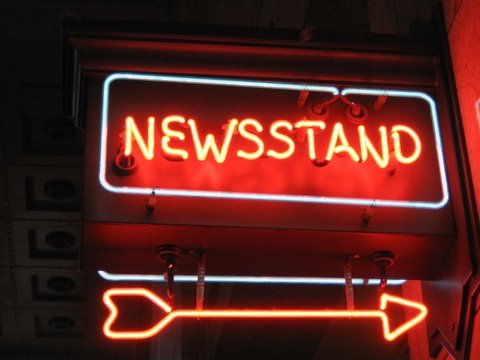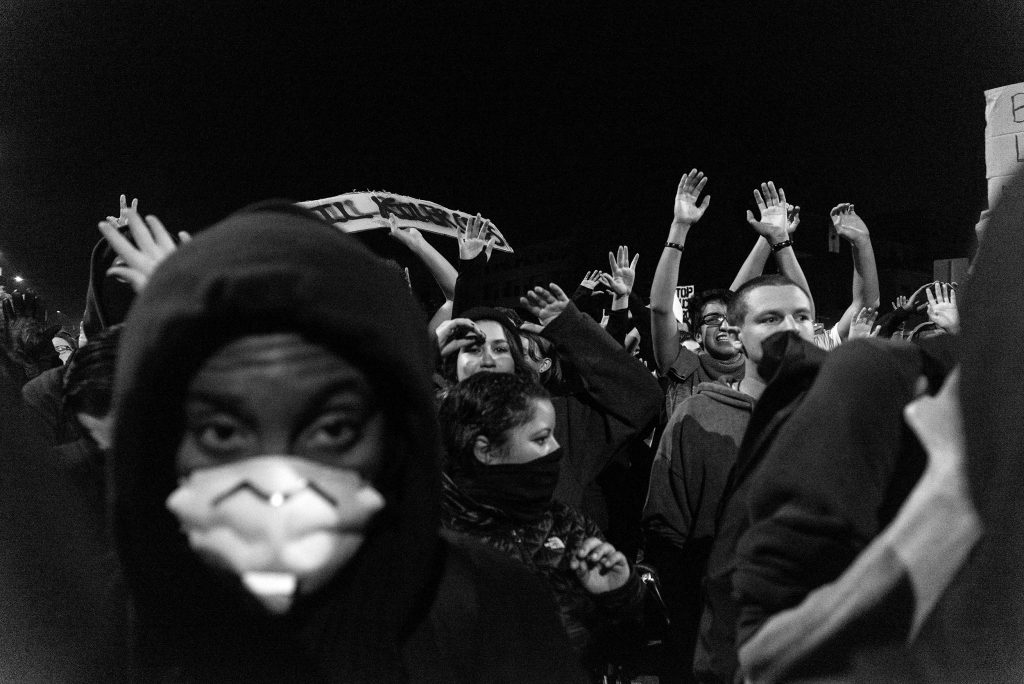Behind Locked Bars: The Role of Media and Mass Incarceration (March)
In March 2019, the Rights Writers explore the role the media has played in covering their issues and what effects it has had — positive and negative.
Perception and framing of issues on mass incarceration in the media has an overwhelming impact on public reaction to various news reports. To some extent, the media is able to raise awareness of the problematic conditions in the criminal justice system. At the same time, there is a question of the underlying manner in which the reporting is communicated. Do media outlets frame issues of mass incarceration in a way that encourages hopelessness or does the media manage to highlight organizations pushing for reform and change? Public response to the inhumane conditions that prisoners face is shaped by the ways in which news outlets frame each given scenario. Backlash is also seen in the ways in which the media portrays advocacy organizations such as the ACLU and the Black Lives Matter Movement.
In September 2018, Americans all along the East Coast were in fear of the wrath that Hurricane Florence would bring. Local and media news outlets broadcasted live footage of several stores along the coast cleared out of non-perishable foods, water, and batteries in preparation for the storm. This, combined with a storm-tracker of the severity of the storm made residents fear for what the damage would bring. South Carolina Governor Henry McMaster ordered mandatory evacuation orders to the five counties that would be affected by the storm, but the government said that two prisons in that area would not be evacuated. When locals and twitter users alike were made aware of the evacuation refusal under the trending hashtag #HurricaneFlorence on Twitter, many made use of the little power that they had by calling the governments in North Carolina, South Carolina, and Virginia to demand prison evacuation.
This situation is merely a repeat of what happened in what is coined the “world’s largest incarceration capital¾Louisiana¾” in the Orleans Parish Prison when Hurricane Katrina hit in 2005. These prisoners were locked in cells full of chest-high, sewer contaminated floodwaters. Prisoners endured unbearable heat, power outages, and generator failures; with some reporting that they went days without food or water.
Reporting on prison conditions is often insufficient, demonstrated by the fact that this situation repeated itself 13 years later in South Carolina. In August of 2006, the ACLU released a report uncovering the details of the horrors that thousands of men, women, and children in Orleans Parish Prisoners faced during Hurricane Katrina. In one interview conducted by the ACLU, Eric Balaban, a staff attorney for the National Prison Project stated “because society views prisoners as second-class citizens, their stories have largely gone unnoticed and therefore untold”. Modern efforts to bring awareness of the issues that prisoners face today are still overshadowed by the political undertones of popular media outlets.

The Black Lives Matter Movement works hard to fight injustices, mass incarceration and police brutality; establishing themselves as the civil rights movement of our generation Black Lives Matter was the first United States social movement in history to successfully use the internet as a mass mobilization device; a phenomenon that scholars refer to as “mediated mobilization”. The Black Lives Matter Global Network demands that Congress and current administration propose legislation in order to dramatically decrease mass incarceration that is rooted in the black communities that continue to disproportionately target the criminal justice system. They also vow to support “the fight to overhaul America’s criminal justice system until all Black, indigenous, and migrant people are no longer targeted and criminalized.”
In August of 2017, a leaked report from the FBI’s counter-terrorism unit identified a group of domestic terrorists known as the Black Identity Extremists. The Black Identity Extremists essentially labeled black activists, including the Black Lives Matter movement, as a danger to public safety. Despite this, media outlets has shown the movement in a negative light, labeling it both as a hate group and terrorist organization by the alt right and United States government due to the strain that it has on political discourse. Fox News is an example of a widely accepted, mainstream conservative media outlet that has been especially active in shaping the portal on the Black Lives Matter movement, with articles and broadcasts titled “How Black Lives Matter is Killing Americans” and “Hey, Black Lives Matter, Stop Terrorizing our Cities”. These articles described protestors as “violent thugs” and a statement made by Bill O’Reilly, stating that “there is a violent subculture in the African American community that should be exposed and confronted”. Media outlets such as Fox News offer both news reporting and opinion pieces, which are opinions of the columnists which may or may not align with the paper of new channel’s editorial positions. This creates an issue where viewers listen to the perspectives of commentators such as Bill O’Reilly or Rachel Maddow’s liberally-biased Black Lives Matter opinion segments on MSNBC rather that critically examining the news they are receiving without bias.

Questioning the legitimacy of social justice organizations such as Black Lives Matter serves as a distraction to reader and the cause of the movement. Devaluing the suffering of prison population also leads to the repeating of mistakes and mistreatment over time. Rather to present the information in an unbiased viewpoint without underlying racial undertones, these outlets bring out competing political objectives to their reporting. Political objectives and bias in media reporting has a powerful influence over the viewers. This matter because viewers become indoctrinated with the underlying influence of the broadcasts.
The media has such a powerful influence on its viewers that allows bias to be demonstrated in some form. Despite how viewers of certain media outlets may be predisposed to certain perspectives because of opinion pieces, the public can benefit from strong opposing viewpoints on opposite ends of the political spectrum. Even what may be considered as raw, unbiased footage from behind the lens of a camera comes from a particular perspective. These videos that go viral on social media platforms such as Facebook and Twitter are often modeled out of context and used to fit a given cause. In closing, it is almost impossible to report on something without any form of bias, but viewers should be aware of the influence and expansiveness that the media has, given that it is a key factor in showcasing the flaws of the American criminal justice system on a global scale.
